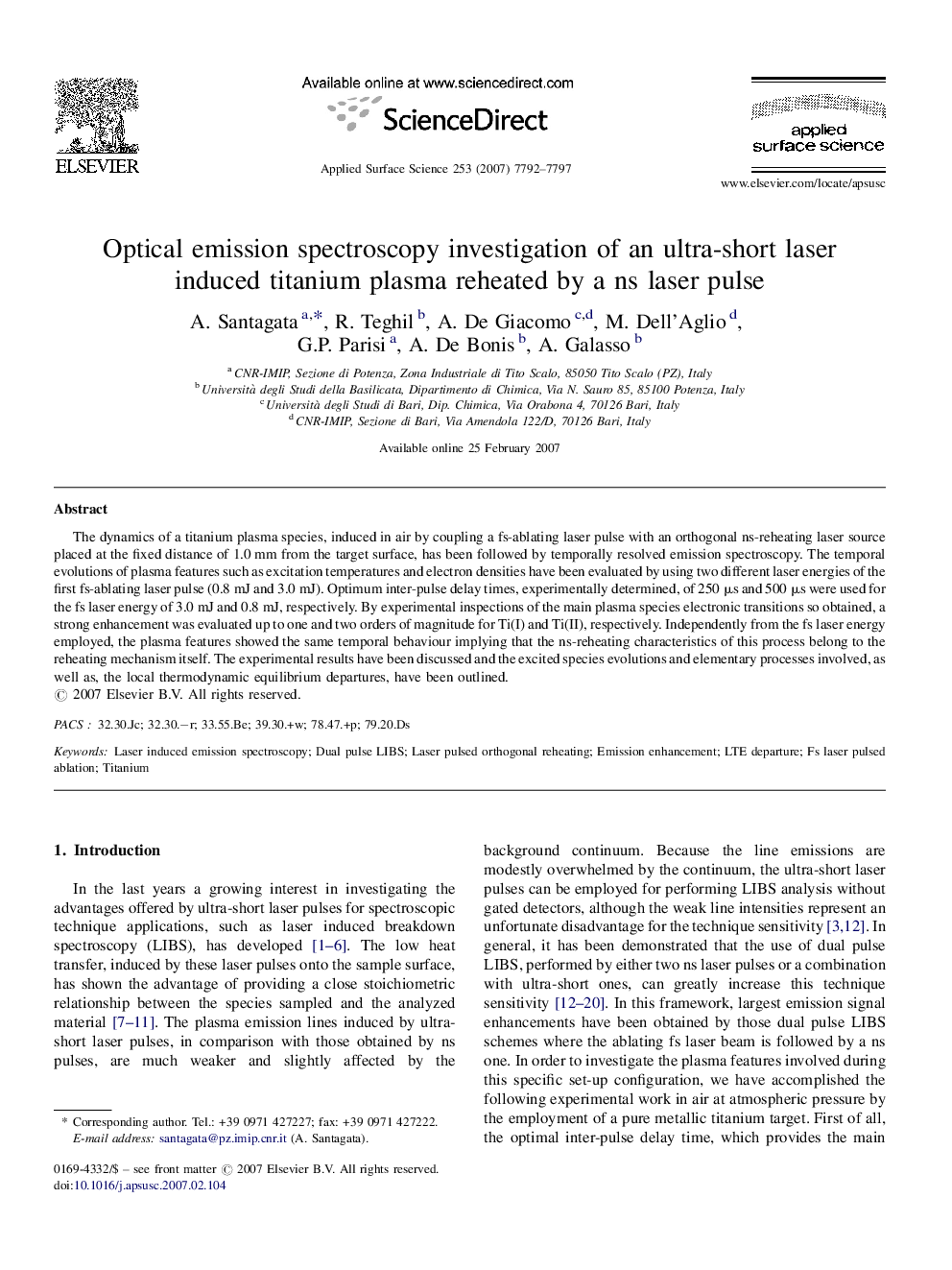| Article ID | Journal | Published Year | Pages | File Type |
|---|---|---|---|---|
| 5369570 | Applied Surface Science | 2007 | 6 Pages |
The dynamics of a titanium plasma species, induced in air by coupling a fs-ablating laser pulse with an orthogonal ns-reheating laser source placed at the fixed distance of 1.0 mm from the target surface, has been followed by temporally resolved emission spectroscopy. The temporal evolutions of plasma features such as excitation temperatures and electron densities have been evaluated by using two different laser energies of the first fs-ablating laser pulse (0.8 mJ and 3.0 mJ). Optimum inter-pulse delay times, experimentally determined, of 250 μs and 500 μs were used for the fs laser energy of 3.0 mJ and 0.8 mJ, respectively. By experimental inspections of the main plasma species electronic transitions so obtained, a strong enhancement was evaluated up to one and two orders of magnitude for Ti(I) and Ti(II), respectively. Independently from the fs laser energy employed, the plasma features showed the same temporal behaviour implying that the ns-reheating characteristics of this process belong to the reheating mechanism itself. The experimental results have been discussed and the excited species evolutions and elementary processes involved, as well as, the local thermodynamic equilibrium departures, have been outlined.
